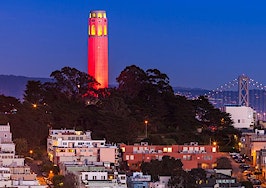- The economy is doing well, and the housing market will follow suit, says economist John Burns.
- But Pacific Union Chief Economist Selma Hepp expects increased interest rates to have a big impact on the buyer pool for sellers.
- Generational labels including "millennial" and "baby boomer" can be too broad to accurately pinpoint buyer needs.
Pacific Union International painted a reassuring picture of the economy for the next three years at the company’s annual Real Estate Economic Forecast: Bay Area to 2019.
The presentation last night was led by Pacific Union International CEO, Mark McLaughlin; John Burns, economist and CEO of John Burns Real Estate Consulting; and Pacific Union VP and chief economist Selma Hepp.
Burns described the national housing scene as a “Goldilocks market — not too hot and not too cold.”
“It’s the economy that matters the most and it’s doing great,” he said.
The country’s five hot markets currently include Seattle; Portland, Oregon; Reno, Nevada; Nashville, Tennessee; and Dallas, he said, but a healthy 66 percent of markets were warm, including former hot markets such as San Francisco and Denver.

Pacific Union Economic Forecast 2017
What about mortgage rates?
McLaughlin, however, who said the San Francisco Bay Area continued to normalize and decelerate, warned that increased interest rates predicted by Hepp under the new Republican government would have a big effect on the buyer pool for sellers.
He gave the example of how someone with a $500,000 mortgage or a $1 million mortgage would be affected by a hiked rate, and the likely narrowing of households that would qualify for a suitable home loan.

Pacific Union Economic Forecast 2017
He added today: “If I am a seller in the next 24 months, I would be acutely aware that every 1 percent rise in mortgage rates effectively eliminates 30 percent of the portion of buyers — last night’s example of 25 percent in the Bay Area can afford a $1 million mortgage at 4 percent, 20 percent at 5 percent, and 16 percent at 6 percent.”
“Most mortgage rates are indexed from the 10 year treasury, so as a result this is a U.S.A. issue, not just for the Bay Area,” he said.
Buyers becoming more cautious in Bay Area
But buyer behavior is changing already in the popular Bay Area housing market, Hepp said.
“Buyers are becoming more wary and cautious; there is a decrease in the share of sales where homes are selling over the asking price,” she added.

Pacific Union Economic Forecast 2017
Homebuyers are less willing to make higher offers; the premium over the asking price has gone from 17 to 13 percent she said, a decrease of 3 to 4 percentage points across most Bay Area markets.
Over the last year, this stance by buyers has been particularly visible in San Francisco, San Mateo and Silicon Valley, she said. The largest increase in inventory in the Bay Area, meanwhile, has been around the $2 million to $3 million price point.

Pacific Union Economic Forecast 2017
California economy reliant on skilled immigrants
The Bay Area relies on a skilled immigrant population to help run businesses in big employment hubs such as Silicon Valley and San Francisco, and there was some concern expressed at the event last night that some immigrants might hesitate about moving to the U.S. or buying homes here.
Said McLaughlin: “We are an internationally diverse population in the Bay Area, and I expect our perspective to remain that way.”
Burns added that California’s population growth is dependent on Asian immigration, and domestically people are leaving California every day.
“International immigration is critical to what happens here,” he said.
Pacific Union has made some inquiries to Beijing investors in the last week about their feelings on a Trump government with its strong stance on immigrants.
The response came back that “motivation to exit capital from China, education and the clean air in California” was enough impetus to get over any reservations about President-elect Trump, said McLaughlin.
Look at the demographics with a finer filter
Burns also continued the conversation from last year on demographics affecting housing requirements in the future.
He has just co-written the book Big Shifts Ahead: Demographic Clarity for Businesses, a closer examination of demographic changes happening in the country looking at generations over decades when people were born.

Pacific Union Economic Forecast 2017
The current labels are too broad, he said: Mark Zuckerberg and Burns’s junior high school daughter are both millennials, while he (at 53) and former President Bill Clinton are both baby boomers — but with vastly different housing needs.
“Bill Clinton thought he was moving; I guess not,” he quipped.
Burns pointed to development happening in certain parts of California reflecting the “Surban” movement (when urban and suburb collide), in which revitalized suburban downtowns are starting to authorize new housing.
“New homes targeted to an older demographic are being built right next to $2 million family homes,” he said.

Pacific Union Economic Forecast 2017
McLaughlin also talked about the importance of getting the product right for the different generations.
“This message was both for developers and homeowners. The most critical issue for a developer is ‘know who the buyers will be in three years’ and design accordingly,” he said.









